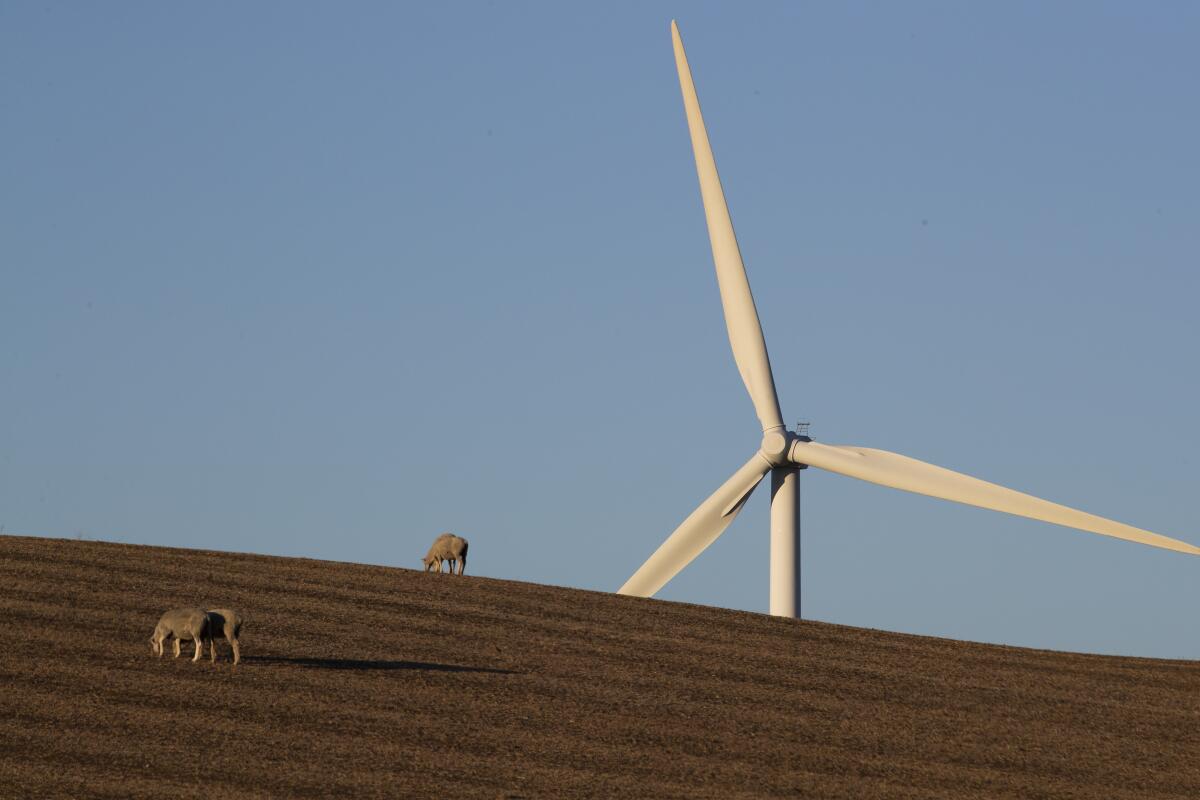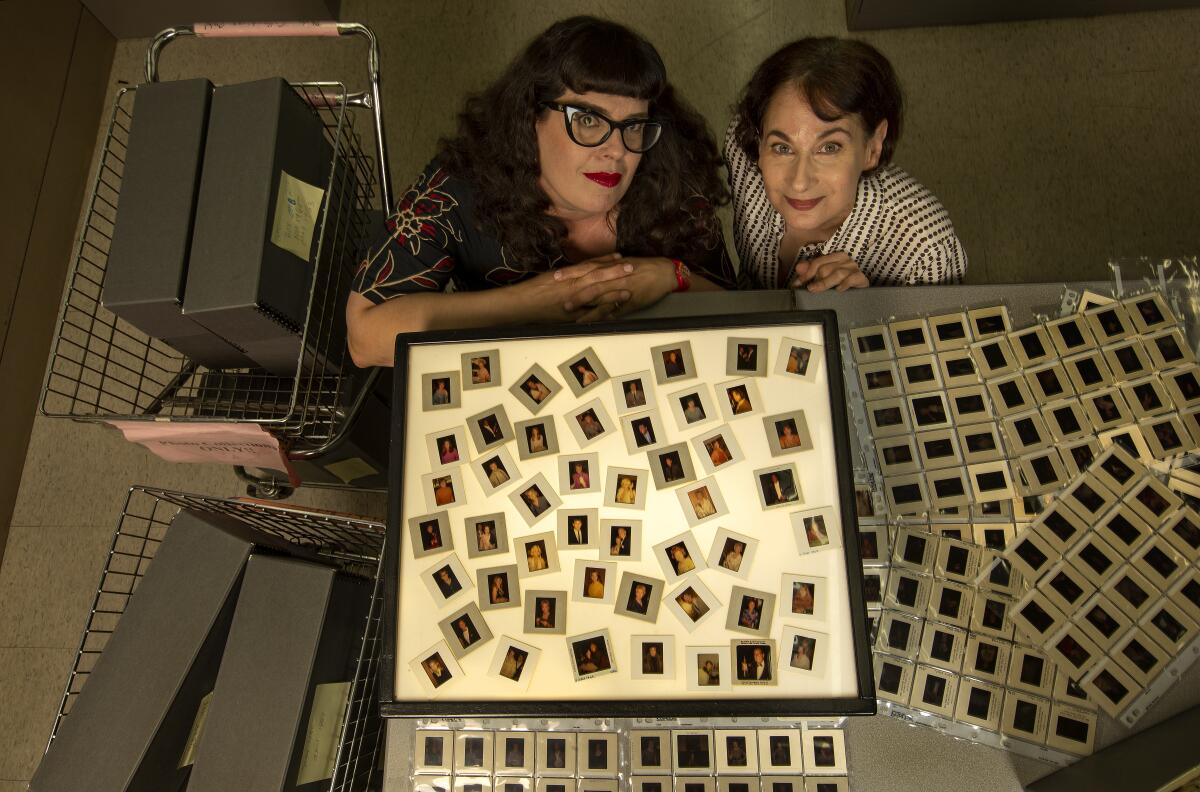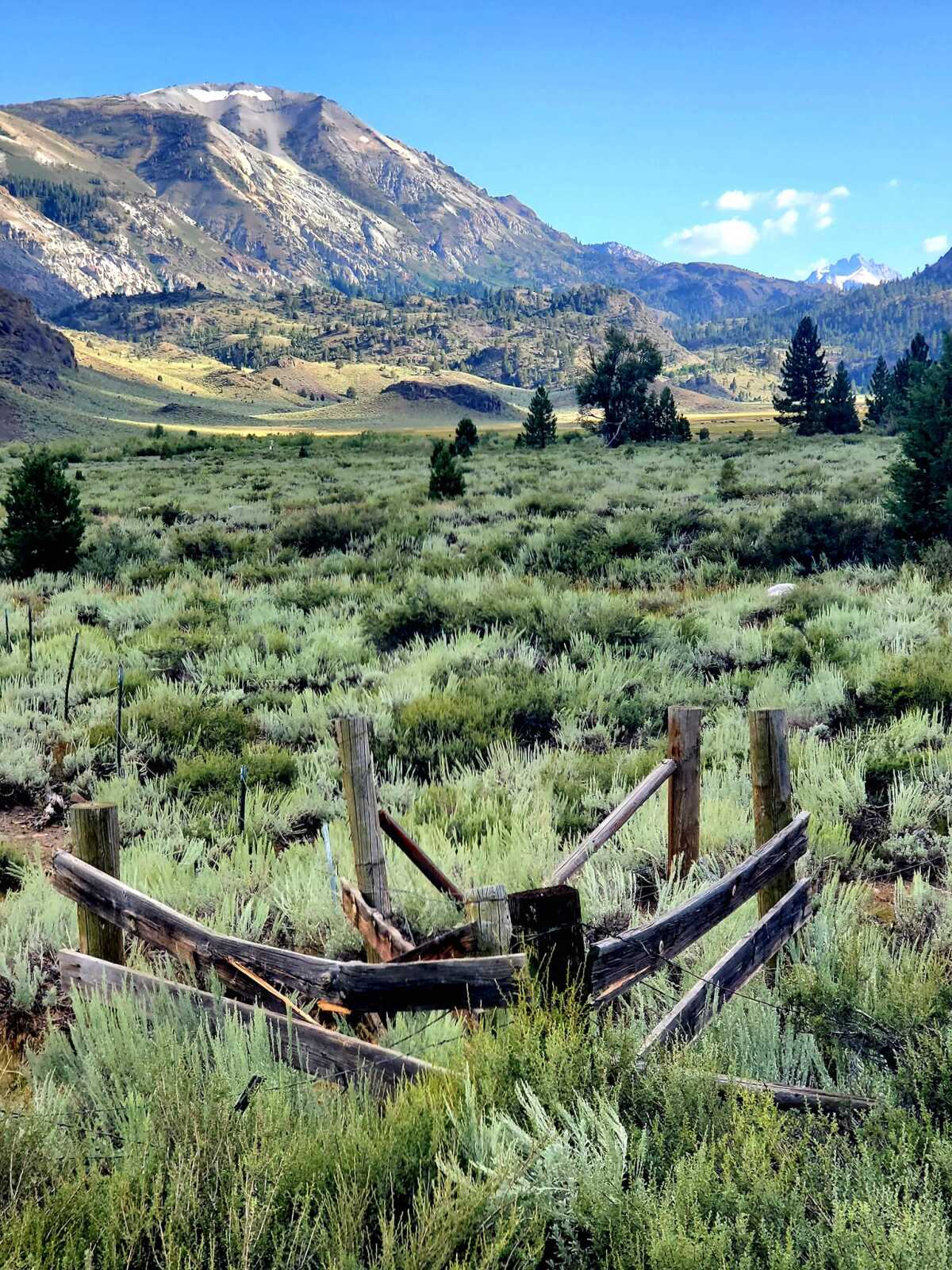After years of secretive land buys, billionaires’ plan for a new California city is revealed

- Share via
Good morning, and welcome to the Essential California newsletter. It’s Thursday, Aug. 31.
For years, a nearly $900-million land-buying operation in Solano County had stumped local, state and federal officials, including the military.
For the record:
3:29 p.m. Aug. 31, 2023A previous version of this newsletter incorrectly attributed a story in the Politics and Government section. The link has been updated.
Just who was behind the secretive company that purchased thousands of acres around Travis Air Force Base, the city of Rio Vista and throughout the rural region north of the Sacramento River? That’s been the question among many reporters — myself included — who in recent weeks have attempted to unravel the Northern California mystery.
Turns out pretty much everyone was in the dark on who these people were and what they planned to do with all that land. But what started as a look at a local oddity took several turns as I reported, growing bigger and weirder before culminating last week with the reveal of a bizarre and ambitious plan steeped in Silicon Valley money.
Buying up the land and freaking out the locals
In 2018, Flannery Associates started making offers on farms and other land in the area, eventually amassing more than 52,000 acres at a cost of more than $800 million, making it the largest landowner in the county.
After reading the Wall Street Journal’s July story on the mystery, I started reaching out to federal agencies, congressional representatives, county leaders and lawyers for Flannery, hoping to learn more.
Solano County Administrator Bill Emlen said officials noticed the “unusual activity” of land purchases and began to map it out in 2018. He emailed a Flannery representative in 2018, hoping to meet with someone and learn more about their plans for all that land.
“They weren’t interested in meeting at that point in time,” Emlen told me earlier this month, adding that the unknowns were concerning to residents and county officials.
“It’s hard to figure out what the rhyme or reason is, in terms of the pattern of acquisitions that they’ve made,” he said. “We’re assuming there’s some rationale behind all of it, but we don’t know what it is.”
As the purchases continued, congressional representatives called for a federal investigation, concerned with the amount of land Flannery owned around Travis AFB, which is one of the busiest bases in the nation. Suspicions mounted after a recent attempt by Chinese-funded interests to acquire land near another U.S. military facility.
But a possible clue into the limited liability company’s plans did emerge last week, in the form of a then-anonymous survey residents in Solano County started receiving via text messages. Screenshots of the poll were shared with The Times.
It sought to gauge respondents’ support for a potential 2024 ballot initiative that would “allow a major new project to be built in the eastern part of Solano County,” including:
“a new city with tens of thousands of new homes, a large solar energy farm, orchards with over a million new trees, and over ten thousand acres of new parks and open space.”
The survey also floated plans to build a new aqueduct to replace the existing one, restore ecological habitats along the Sacramento-San Joaquin River Delta, give county residents priority and assistance in buying new homes, attract major professional sports teams — and do it all with private money.
Rep. John Garamendi (D-Walnut Grove), who represents the region, joked that some of the few things they didn’t mention were “a lollipop and ice cream cone every day for every kid.”
He said his main objective is to protect the operations at Travis. Flannery-owned land extends “right up to the fence line” at several spots around the base.
He also called out “heavy handed and, frankly, dishonest operations that Flannery’s engaged in with the historic family farms in the area.”
In May, the company filed a federal lawsuit against a group of farmers, alleging a price-fixing scheme. Garamendi said the mounting legal fees from the lawsuit were too much for some farmers, who took deals to avoid further costs.
“Essentially, they’re being thrown off the land,” he said.
The buyers reveal themselves
And then, as sometimes happens in the news biz, someone else solved the mystery first. The New York Times published a story late last week identifying several Flannery investors as major players in Silicon Valley. They include billionaire investor Michael Moritz, Emerson Collective founder Laurene Powell Jobs, LinkedIn co-founder Reid Hoffman, Stripe co-founders Patrick and John Collison and venture capitalist Marc Andreessen, among others.
I reached out to Flannery attorneys multiple times, and Brian Brokaw, a spokesperson for the LLC, eventually contacted me after the New York Times story broke.
Brokaw confirmed the investors named by the NYT and said the group was the “brainchild” of former Goldman Sachs trader Jan Sramek, who is “spearheading the project” in Solano County.
Sramek made a splash in the financial industry in the late 2000s as a wunderkind known for quoting Ayn Rand and idealizing billionaire Peter Thiel.
Brokaw also confirmed the survey sent to residents came from Flannery, but declined to comment on any foreign investors among its ranks or whether federal investigators had reached out to them. He said his team had contacted Garamendi’s office for a meeting, had a meeting with Rep. Mike Thompson (D-St. Helena) this week and “is working closely with the community ... to craft a shared vision for Solano’s future.”
Thompson, whose district neighbors Garamendi’s, confirmed he did meet with Sramek on Tuesday but wasn’t impressed by what he heard.
“It is clear that they don’t have a plan; they have a vision,” Thompson said in a statement. “The secrecy under which they operated caused consternation and concern from residents, local elected officials, and federal agencies, and while they explained their rationale, I do not believe the secrecy was necessary.”
He said he remains concerned that “a development of the magnitude they are [proposing] could harm Travis Air Force Base in the long term” and called on Flannery to ensure the activity doesn’t disadvantage family farmers.
A spokesperson from Garamendi’s office told me the congressman was slated to meet with Sramek and others from Flannery this Friday.

My colleague Nathan Solis spoke with Solano County Supervisor Monica Brown, who wondered how Flannery’s plans would affect the county’s current residents, many of them farmers.
“We’re growing food and helping people. Why would you stop economic growth like that?” she told Nathan. “Why would they spend $800 million and not be transparent about it?”
Is their plan even possible?
So what would it take to build an entire city from scratch? Of course, many, many, many billions of dollars. But also substantial rezoning to develop land currently designated for farming and other industry into housing and business uses. It appears Flannery is banking on a voter-approved ballot initiative to make that happen, but the company will almost certainly have to contend with the U.S. military, given the proximity to Travis Air Force Base and a range of security concerns.
For example, there are restrictions on wind turbines in the region, as the Air Force says they can interfere with radar and other operations at Travis.
Garamendi also noted that the Department of Defense manages “highly sensitive, secretive” communications infrastructure near the base and on land acquired by Flannery.
Beyond the survey, it’s not entirely clear what Flannery has in mind for the new city. Brokaw declined to offer details, saying only, “stay tuned.”
Garamendi told me he’s suspicious of the group’s lofty goal to build a modern, clean-energy-powered metropolis, given the myriad land use restrictions and geographical challenges. That includes abandoned gas fields, narrow highways not designed to support a whole city’s worth of traffic and complicated zoning and easements.
“If I were an investor, I’d be looking for the door,” he said.
Garamendi also wouldn’t rule out a more direct power play by the collective of billionaires, whom he accused during an informational committee hearing this week of “using secrecy, bully and mobster tactics.”
“If they’re going to do [ballot] initiatives, that indicates to me they intended to spend a lot of money on politics and gain control of the local ... community,” he told me last week.
Neither Sramek nor other Flannery investors returned Nathan’s requests for comment. For more on this story, you can read his reporting here.
And now, here’s what’s happening across California from Laura Blasey:
Note: Some of the sites we link to may limit the number of stories you can access without subscribing.
L.A. STORIES
The L.A. library bid $144,000 for a hidden trove of photos, paving the way for a unique new collection. The 12,500 celebrity photographs — the vast majority never published — were taken by a post office worker who spent nights and weekends at the parties, haunts and ballrooms of the famous. Los Angeles Times

POLITICS AND GOVERNMENT
As yet another bus of migrants arrived in Los Angeles on Wednesday, the Los Angeles City Council voted to ask the city’s attorney to investigate whether Texas committed any crimes in sending the buses. The state has sent at least 11 groups of migrants to California. City News Service
The California Senate will get a new leader next year. Democrats on Monday tapped a North Coast lawmaker, marking a transition from leaders who represent urban population centers to rising power for politicians from largely rural districts. Los Angeles Times
As California public school districts explore policies around gender identity, the extent to which state law grants young people rights to privacy from their parents has come under a glaring spotlight. Los Angeles Times
The annual Google Cloud Next conference was interrupted Tuesday by protesters critical of the company’s contract with Israel’s military. Some 30 protesters, including former Google employees, chained themselves together and current Google workers passed out fliers explaining their objections. Los Angeles Times
HOUSING AND HOMELESSNESS
Evictions have surpassed pre-pandemic levels, but who is receiving those notices? Los Angeles City Controller Kenneth Mejia released a new data set this week that offers insight into the neighborhoods hit hardest by the end of pandemic-era protections. LAist
Support our journalism
HEALTH AND THE ENVIRONMENT
Amid heightened fire risk, PG&E cut off power Wednesday to more than 4,200 Northern California homes and businesses. It was the utility’s first preventative shut-off this year. Sacramento Bee
Tropical Storm Hilary cost Coachella Valley farmworkers days of work and money. But financial aid and job opportunities are hard to come by as the rural area struggles to recover from heavy rains and flooding. CalMatters
A wet winter has led to an increase in mosquitoes, and experts say California is now facing an uptick in the illnesses they carry, including West Nile virus. The state counts 55 human cases of the virus, five of them fatal. Los Angeles Times
CALIFORNIA CULTURE
It’s time to take your MSAT — mandatory sweetie appreciation time. A group of pilots flying small planes are helping to alleviate crowded animal shelters by ferrying dogs, cats and even a few ferrets to locales with more space. Come for the photos, bring some tissues and stay for the story. Los Angeles Times

The subject of the latest installment of The Times’ Made in California series will be familiar to parents and dog owners alike: Wham-O, the company best known for Frisbees, hula hoops and Slip ’N Slides, is celebrating a big birthday — and mounting a big comeback. Los Angeles Times
A wealthy resident of Presidio Heights has asked San Francisco to shut down a group of public pickleball courts near her home, saying the popular sport is frustratingly noisy. The catch? She’s just fine with the private court in her backyard, critics say. San Francisco Chronicle
Free online games
Get our free daily crossword puzzle, sudoku, word search and arcade games in our new game center at latimes.com/games.
AND FINALLY
Today’s California landmark is from Rick LeFlore of Davis: the Sonora Pass in the eastern Sierra Nevada, where “life just feels timeless.”

Rick writes:
The east side of the Sierra Nevada is vast, mostly lonely and starkly beautiful while playing such a large role in California’s watershed and western movement history. One of my favorite east side “escapes” from the well-known tourist spots is the Sonora Pass region as it drops precipitously to the east of the Sierra Nevada crest.
What are California’s essential landmarks? Fill out this form to send us your photos of a special spot in California — natural or human-made. Tell us why it’s interesting and what makes it a symbol of life in the Golden State. Please be sure to include only photos taken directly by you. Your submission could be featured in a future edition of the newsletter.
Please let us know what we can do to make this newsletter more useful to you. Send comments to [email protected].
Sign up for Essential California
The most important California stories and recommendations in your inbox every morning.
You may occasionally receive promotional content from the Los Angeles Times.




